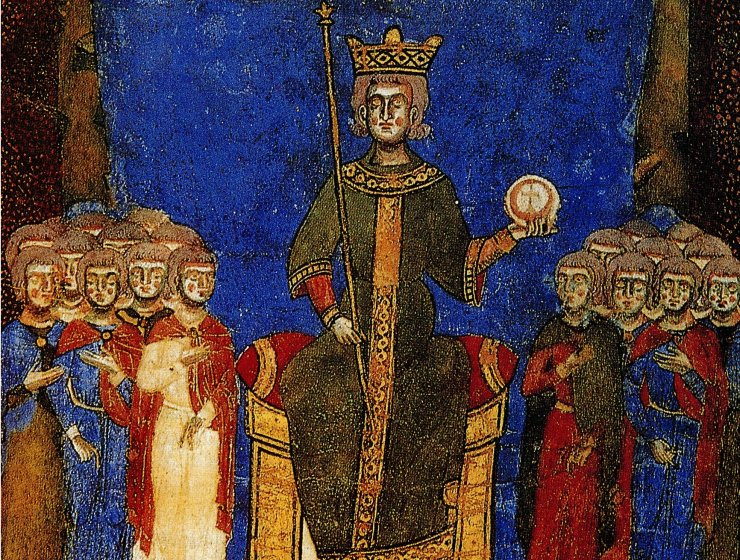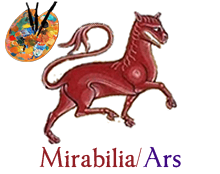
-Index-
Presentation
Staging the leader’s divinity. Introduction
Mirko VAGNONI
Special Issue
The role of incarnation in the Republic: between political seduction and theophanic vision
Nicolas HUMPHRIS
Original title: La fonction d’incarnation dans la République : entre séduction politique et vision théophanique
Keywords: De Gaulle, Imitation of Christ, Incarnation of power, Judge of children, Membership and civility, Middle Ages, Political charisma, Sacred royalty.
There is, in the state power of the contemporary French Republic, an archaic institution which continues incognito, the “function of incarnation”. This charismatic function is an institutional device developed at the dawn of our civilization (4th-10th centuries) to arouse, as part of an enterprise of seduction, the free adherence of subjects to public authority by borrowing the model of Christ mediator whose human presence and the flesh irresistibly and subliminally attract men to the invisible God. Today, those who exercise the function of incarnation in the Republic also secretly arouse the adhesion of men to the invisible and transcendent entity that is the State, in the manner of the “seducer” Christ. Whether we are believers or atheists, we all depend, for our attachment to the Republic, on this Christ-like power of seduction of the leader, and therefore, indirectly, of a certain Christ, mysteriously present in his earthly imitator. Are we the prisoners of the subliminal grip of this hidden God? To prevent the said political seduction from being a place of non-freedom, it is necessary to become aware of it, and, even more, to disocccult this Christ who appears here against all expectations, while he is both ignored by the State. and by the Church. It is important to rediscover the capacity for theophanic perception which was from the outset intimately associated with the function of incarnation, to lift the gaze in order to come to perceive the God hidden in the secularized nation state.
Articles
Women as a source of aesthetic pleasure in late medieval India
Sara FERNÁNDEZ JUBÍN
Original title: La mujer como fuente de placer estético en la India tardomedieval
Keywords: India, Keśavdās, Orchā, Pravīṇ Rāy, Pātura, Woman.
The aim of this article is to spread the role played by those women belonging to the courtly and artistic sphere of late medieval India. Specifically, we will focus on the figure of the pātura, trying to claim a new definition and conception for this term, given its importance in the transmission of Indian dance and musical forms. Although we will start by mentioning a well-known case, further on we will focus our study on a particular pātura, Pravīṇ Rāy, an artist associated to the court of Orchā, the capital city of the ancient Bundelkhaṇḍ – nowadays in Madhya Pradeś. We will begin by outlining some of the legends for which it is popular in the region. Then we will turn to the facts provided by a primary source that is directly related with our protagonist – one of the works of the great poet Keśavdās –, which will allow us to conclude reaffirming the significance of the pāturas and revaluing the role of these artists.
The uniqueness of Manueline bi faceted crucifixes between phantasmatic displacements in artistic contemporaneity
Alexandre Emerick NEVES
Original title: A singularidade dos cruzeiros bifacetados manuelinos entre deslocamentos fantasmais na contemporaneidade artística
Keywords: Anachronism, Fragmented body, Pietà, Portuguese-Brazilian culture, Warburguian phantasmal model.
To promote a historical-cultural crossing, I highlight the use of a figural fragment and its correspondences in historical aesthetic models: the pendant arm. From these relationships, a genealogy of the figuration of the body is consolidated, especially from the studies of Georges Didi-Huberman on the survival of the images, notably according to the ghostly model of Aby Warburg. In admitting the figure of the heroic body as a derivation of the figure of the holy body in previous work, I now propose an anachronistic and remissive path, starting with a short contemporary cinematographic scene, in About Schmidt (2002), to arrive at the medieval Portuguese Pietàs in the singular typology of Manueline bifaceted crucifix. My attention, therefore, falls on a significant deviation in relation to the axial paths of Art History, in order to regain a contact between Brazilian art and Portuguese culture, whose connections I suppose are considerably attenuated.
Elizabeth Siddal, Pre-Raphaelite model and artist
Laura PINTADO MARÍN
Original title: Elizabeth Siddal, modelo y artista prerrafaelita
Keywords: Artist, Elizabeth Siddal, Models, Pre-Raphaelite Brotherhood, XIX century.
Elizabeth Siddal is a character that we know today as a model and, especially, as the wife of the well-known Pre-Raphaelite painter Dante Gabriel Rossetti. For years, her work has been undervalued and the studios where she has been mentioned have only highlighted aspects of her private life, mythologizing and romanticizing the tragedies she was forced to go through to find a place in the demanding world of art.






















































































